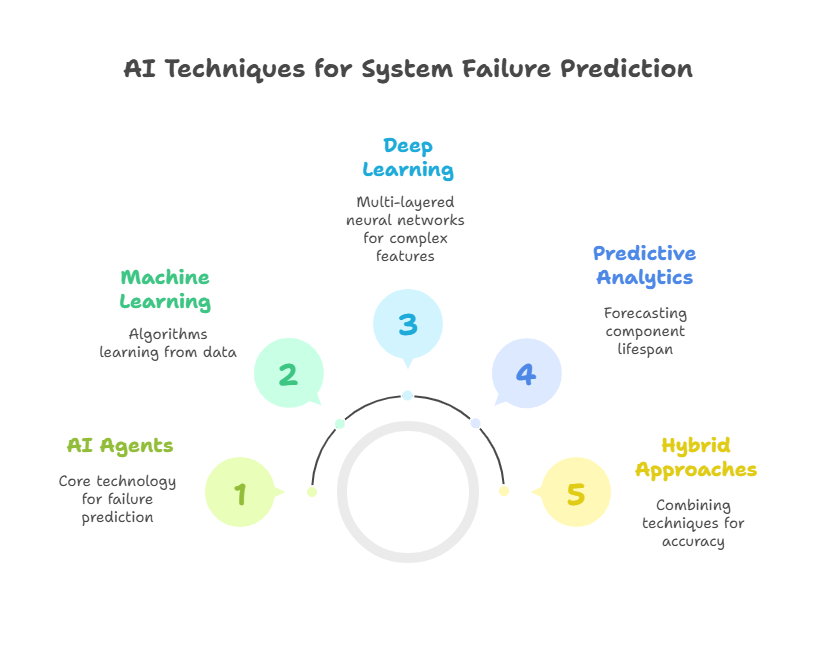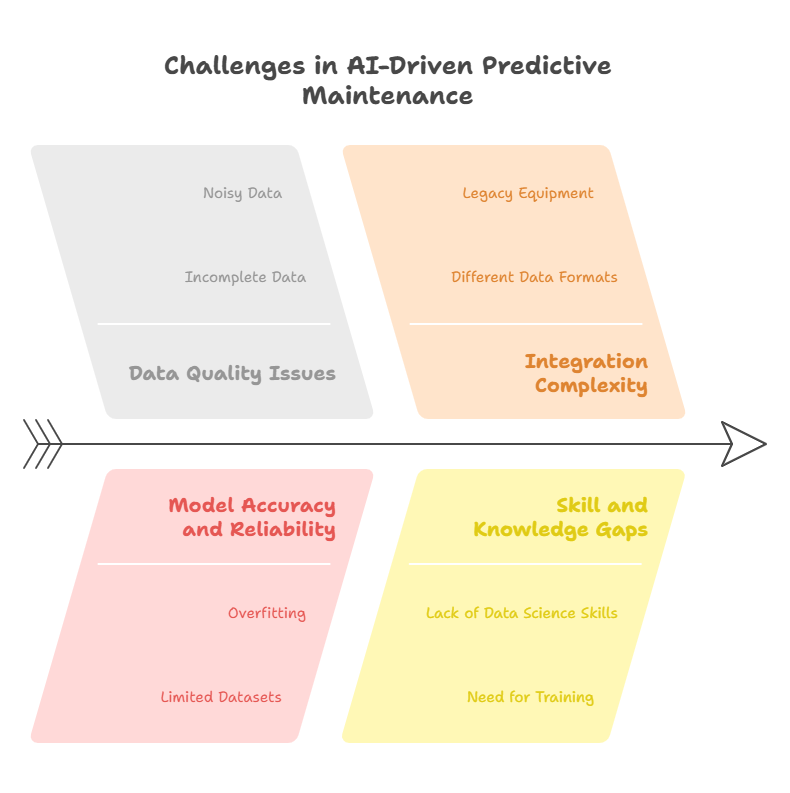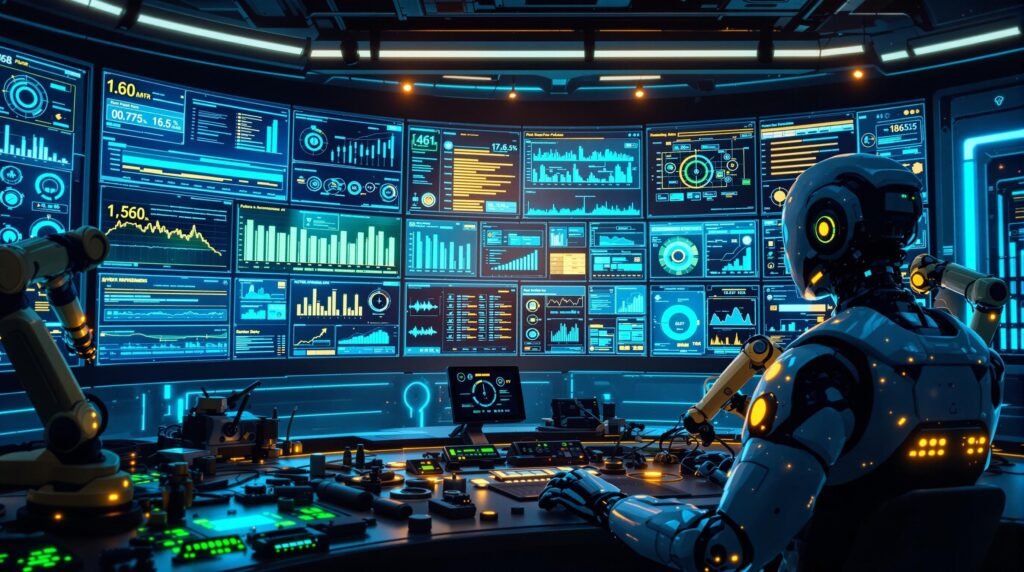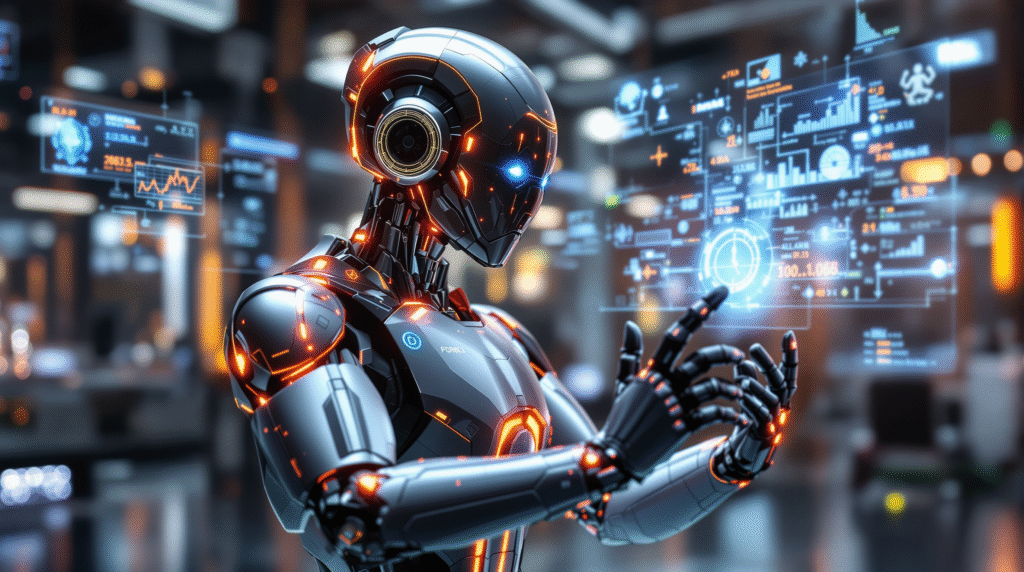Introduction to AI Agents in Predictive Maintenance
Predictive maintenance is rapidly transforming how industries manage the health and performance of their systems. Traditional maintenance approaches, such as reactive or scheduled maintenance, often lead to unexpected downtime or unnecessary servicing, resulting in increased costs and reduced operational efficiency. AI agents offer a powerful alternative by enabling proactive, data-driven maintenance strategies that anticipate failures before they occur.
AI agents are autonomous software entities designed to perceive their environment, analyze data, and make decisions or take actions without constant human intervention. In the context of predictive maintenance, these agents continuously monitor system parameters through sensors and data streams, detect anomalies, and predict potential failures using advanced machine learning algorithms.
The integration of AI agents into maintenance processes allows organizations to shift from reactive to predictive models. This shift not only minimizes unplanned downtime but also optimizes resource allocation by scheduling maintenance activities precisely when needed. AI agents can analyze vast amounts of historical and real-time data, identifying subtle patterns and early warning signs that human operators might miss.
Moreover, AI agents can adapt and learn over time, improving their predictive accuracy as more data becomes available. This adaptability is crucial in complex systems where operating conditions and failure modes may evolve.
In summary, AI agents play a pivotal role in enhancing predictive maintenance by providing continuous, intelligent monitoring and decision-making capabilities. Their deployment leads to increased system reliability, cost savings, and improved safety, marking a significant advancement in maintenance technology.
Understanding System Failures: Types and Causes
To effectively use AI agents for predicting system failures and enabling preventive maintenance, it is essential to understand the nature of system failures and their underlying causes. System failures can vary widely depending on the type of equipment, operating environment, and usage patterns, but they generally fall into several common categories.
Mechanical Failures occur due to wear and tear, fatigue, corrosion, or physical damage to components such as bearings, gears, or shafts. These failures often develop gradually, making them suitable for early detection through vibration analysis or temperature monitoring.
Electrical Failures involve issues like short circuits, insulation breakdown, or component degradation in electrical systems. These can cause sudden outages or intermittent faults and may be detected by monitoring current, voltage, or insulation resistance.
Software and Control Failures arise from bugs, configuration errors, or communication breakdowns within control systems. These failures can lead to incorrect system behavior and are often identified through error logs or abnormal control signals.
Environmental Factors such as temperature extremes, humidity, dust, or chemical exposure can accelerate degradation or cause unexpected failures. Monitoring environmental conditions helps AI agents assess risk levels and predict failures related to external influences.
Human Factors including operator errors, improper maintenance, or incorrect installation can also contribute to system failures. While harder to predict directly, AI agents can analyze operational patterns to identify risky behaviors.
Understanding these failure types and their causes enables AI agents to focus on relevant data sources and apply appropriate predictive models. By recognizing early signs specific to each failure mode, AI agents can provide timely alerts and recommendations, reducing downtime and maintenance costs.

Data Collection and Sensor Integration
Effective predictive maintenance powered by AI agents relies heavily on the quality and quantity of data collected from the monitored systems. Data collection is the foundation that enables AI agents to analyze system behavior, detect anomalies, and predict potential failures accurately.
Modern industrial systems are typically equipped with a variety of sensors that measure parameters such as temperature, vibration, pressure, humidity, voltage, current, and more. These sensors generate continuous streams of real-time data, providing a detailed view of the system’s operational state.
Integrating these sensors into a cohesive data collection framework is a critical step. This involves selecting appropriate sensor types based on the system and failure modes, ensuring reliable data transmission, and managing data storage. Internet of Things (IoT) technologies play a vital role here, enabling seamless connectivity between sensors, edge devices, and cloud platforms.
AI agents leverage this sensor data to build models of normal system behavior and identify deviations that may indicate emerging faults. High-frequency data from vibration sensors, for example, can reveal early signs of mechanical wear, while temperature sensors can detect overheating components.
Data preprocessing is also essential to handle noise, missing values, and inconsistencies. Techniques such as filtering, normalization, and feature extraction help prepare the data for effective analysis by AI algorithms.
Furthermore, sensor integration must consider scalability and security. As systems grow in complexity, the data infrastructure should support increasing volumes of data without compromising performance. Security measures are necessary to protect sensitive operational data from unauthorized access or tampering.
AI Techniques for Failure Prediction
AI agents rely on a variety of advanced techniques to analyze collected data and predict system failures accurately. These techniques enable the detection of subtle patterns and anomalies that often precede breakdowns, allowing maintenance to be scheduled proactively.
Machine Learning (ML) is a core approach where algorithms learn from historical data to identify normal and abnormal system behavior. Supervised learning methods, such as decision trees, support vector machines, and neural networks, are trained on labeled datasets containing examples of both healthy and faulty states. Once trained, these models can classify new data and predict potential failures.
Unsupervised Learning techniques, like clustering and anomaly detection algorithms, are used when labeled failure data is scarce. These methods identify deviations from normal patterns without prior knowledge of failure types, making them valuable for detecting novel or rare faults.
Deep Learning extends traditional ML by using multi-layered neural networks capable of automatically extracting complex features from raw sensor data. Convolutional neural networks (CNNs) and recurrent neural networks (RNNs) are particularly effective for analyzing time-series data such as vibration signals or temperature trends.
Predictive Analytics combines statistical models with AI to forecast the remaining useful life (RUL) of components. Techniques like regression analysis and survival models estimate when a part is likely to fail, enabling precise maintenance scheduling.
Reinforcement Learning can be applied to optimize maintenance policies by learning the best actions to minimize downtime and costs based on system feedback.
Hybrid Approaches often integrate multiple AI techniques to improve prediction accuracy and robustness. For example, combining anomaly detection with supervised classification can enhance fault diagnosis.
AI agents continuously update their models with new data, improving their predictive capabilities over time. This adaptability is crucial for handling changing operating conditions and evolving failure modes.

Deployment and Integration of AI Agents in Maintenance Systems
Deploying AI agents for predictive maintenance involves integrating them seamlessly into existing industrial systems to enable real-time monitoring, analysis, and decision-making. This phase is critical to ensure that AI-driven insights translate into actionable maintenance activities that improve system reliability and reduce downtime.
System Integration requires connecting AI agents with data sources such as sensors, control systems, and enterprise resource planning (ERP) platforms. This integration enables agents to access real-time operational data and historical records, providing a comprehensive view of system health.
Edge vs. Cloud Deployment is an important consideration. Deploying AI agents on edge devices close to the equipment allows for low-latency processing and immediate anomaly detection, which is vital for time-sensitive applications. Cloud deployment, on the other hand, offers scalable computing resources and centralized model management, facilitating complex analytics and cross-site coordination.
API and Microservices Architecture can be used to modularize AI agent functionalities, making them easier to maintain, update, and scale. Microservices enable different AI components—such as data ingestion, anomaly detection, and prediction—to operate independently yet cohesively.
User Interfaces and Alerts are essential for effective human-agent collaboration. Dashboards, mobile apps, or integration with existing maintenance management systems provide operators with clear, actionable insights and timely alerts about potential failures.
Security and Privacy must be addressed to protect sensitive operational data and ensure compliance with industry standards. Secure communication protocols, authentication mechanisms, and data encryption are critical components of a robust deployment.
Continuous Monitoring and Feedback loops allow AI agents to learn from new data and maintenance outcomes, refining their models and improving prediction accuracy over time.
Preventive Maintenance Strategies Enabled by AI
AI agents revolutionize preventive maintenance by transforming it from a schedule-based approach to a data-driven, condition-based strategy. Instead of performing maintenance at fixed intervals, AI agents analyze real-time system data to determine the optimal timing for maintenance activities, maximizing equipment uptime while minimizing costs.
Condition-Based Monitoring is a core strategy where AI agents continuously assess equipment health using sensor data. By monitoring parameters like vibration, temperature, pressure, and electrical signals, agents can detect early signs of degradation and recommend maintenance before failures occur.
Remaining Useful Life (RUL) Prediction enables AI agents to estimate how much longer a component will function reliably. This prediction allows maintenance teams to plan interventions precisely when needed, avoiding both premature maintenance and unexpected breakdowns.
Risk-Based Prioritization helps AI agents rank maintenance tasks based on the criticality of equipment, potential failure impact, and current condition. This ensures that resources are allocated to the most important maintenance activities first.
Dynamic Scheduling allows AI agents to adjust maintenance plans in real-time based on changing conditions, operational demands, and resource availability. This flexibility optimizes maintenance efficiency and reduces disruption to operations.
Predictive Analytics Integration combines historical data with real-time monitoring to identify patterns and trends that indicate impending failures. AI agents use this information to proactively schedule maintenance activities.
Example Python Code: Simple RUL Prediction Model
python
import numpy as np
from sklearn.linear_model import LinearRegression
import matplotlib.pyplot as plt
# Simulated sensor data (e.g., vibration levels over time)
time_points = np.array([1, 2, 3, 4, 5, 6, 7, 8, 9, 10])
vibration_levels = np.array([0.1, 0.15, 0.2, 0.3, 0.4, 0.5, 0.7, 0.9, 1.1, 1.3])
# Train a simple linear regression model to predict RUL
model = LinearRegression()
model.fit(time_points.reshape(-1, 1), vibration_levels)
# Predict future vibration levels
future_time = np.array([11, 12, 13, 14, 15])
predicted_vibration = model.predict(future_time.reshape(-1, 1))
# Define failure threshold
failure_threshold = 2.0
# Estimate RUL (when vibration exceeds threshold)
def estimate_rul(current_time, current_vibration, threshold):
if current_vibration >= threshold:
return 0 # Already failed
# Simple linear extrapolation
slope = model.coef_[0]
time_to_failure = (threshold - current_vibration) / slope
return max(0, time_to_failure)
current_vibration = 1.3
rul = estimate_rul(10, current_vibration, failure_threshold)
print(f"Estimated Remaining Useful Life: {rul:.1f} time units")
print(f"Recommended maintenance window: {10 + rul - 1:.1f} to {10 + rul:.1f} time units")This example demonstrates how AI agents can use simple predictive models to estimate when maintenance should be performed, enabling proactive scheduling that prevents unexpected failures.
Case Studies: Successful Implementations of AI Agents in Predictive Maintenance
Real-world applications of AI agents in predictive maintenance demonstrate their transformative impact across various industries. These case studies highlight how AI-driven approaches have prevented system failures, reduced downtime, and optimized maintenance costs.
Case Study 1: Manufacturing Plant – Vibration Monitoring
A large manufacturing facility implemented AI agents to monitor vibration data from critical rotating machinery. Using machine learning models trained on historical sensor data, the agents detected early signs of bearing wear. This early warning allowed maintenance teams to replace bearings before catastrophic failure, reducing unplanned downtime by 30% and saving significant repair costs.
Case Study 2: Energy Sector – Wind Turbine Maintenance
In the wind energy industry, AI agents analyze sensor data from turbines, including temperature, vibration, and wind speed. By predicting component degradation and estimating remaining useful life, the agents enabled condition-based maintenance scheduling. This approach increased turbine availability by 15% and extended component lifespans, improving overall energy production efficiency.
Case Study 3: Transportation – Fleet Vehicle Health Monitoring
A logistics company deployed AI agents to monitor engine and brake system data across its vehicle fleet. The agents identified patterns indicating potential failures, such as abnormal temperature rises or pressure drops. Proactive maintenance based on these insights reduced breakdown incidents by 25%, improved fleet reliability, and lowered maintenance costs.
Case Study 4: Aerospace – Aircraft Engine Prognostics
Aircraft manufacturers use AI agents to analyze engine sensor data during flights. These agents predict potential faults and recommend maintenance actions during scheduled ground time, avoiding in-flight failures. This predictive maintenance strategy enhanced safety, reduced unscheduled maintenance, and optimized engine overhaul schedules.
Case Study 5: Oil and Gas – Pipeline Integrity Monitoring
AI agents monitor pressure, flow rates, and corrosion sensor data in pipelines. By detecting anomalies and predicting leaks or failures, the agents help schedule timely inspections and repairs. This proactive approach minimizes environmental risks and costly shutdowns.
Challenges and Limitations
While AI agents offer significant advantages in predictive maintenance, their implementation and operation face several challenges and limitations that organizations must address to achieve successful outcomes.
Data Quality Issues
Poor data quality is one of the most significant obstacles to effective AI-driven predictive maintenance. Incomplete, noisy, or inconsistent sensor data can lead to inaccurate predictions and false alarms. Missing data points, sensor drift, and calibration errors can compromise model performance. Organizations must invest in robust data validation, cleaning, and preprocessing procedures to ensure reliable inputs for AI agents.
Model Accuracy and Reliability
AI models may struggle with accuracy, especially when dealing with complex systems or rare failure modes. Overfitting to historical data can result in poor generalization to new conditions. Additionally, models trained on limited datasets may not capture all possible failure scenarios, leading to missed predictions or false positives that erode trust in the system.
Integration Complexity
Integrating AI agents with existing maintenance systems, enterprise software, and legacy equipment can be technically challenging and costly. Different data formats, communication protocols, and system architectures may require significant customization and middleware development. This complexity can delay implementation and increase project costs.
Skill and Knowledge Gaps
Successful deployment of AI agents requires specialized expertise in data science, machine learning, and domain knowledge. Many organizations lack the necessary skills internally, requiring investment in training or external consultants. Maintenance teams may also need education to effectively interpret and act on AI-generated insights.
Cost and ROI Concerns
Initial implementation costs for sensors, computing infrastructure, and AI development can be substantial. Organizations may struggle to justify these investments, especially when the return on investment is not immediately apparent. Long payback periods can make it difficult to secure funding for predictive maintenance initiatives.
Regulatory and Compliance Issues
In highly regulated industries like aerospace, healthcare, or nuclear power, AI-driven maintenance decisions must comply with strict safety and regulatory standards. Ensuring that AI agents meet these requirements can be complex and may limit their application in certain contexts.

Integration with Existing Maintenance Systems
Integrating AI agents into traditional maintenance workflows and tools is essential for maximizing the benefits of predictive maintenance while ensuring smooth adoption within organizations.
Compatibility with Maintenance Management Systems
AI agents must interface effectively with existing Computerized Maintenance Management Systems (CMMS) or Enterprise Asset Management (EAM) platforms. This integration allows AI-generated insights—such as failure predictions, maintenance recommendations, and alerts—to be seamlessly incorporated into work order management, scheduling, and reporting processes.
Data Interoperability
Successful integration requires handling diverse data formats and communication protocols from legacy equipment and modern sensors. Middleware solutions or standardized data models (e.g., OPC UA, MQTT) facilitate consistent data exchange between AI agents and existing systems, ensuring reliable and timely information flow.
Workflow Alignment
AI-driven maintenance recommendations should align with established maintenance procedures and organizational policies. This includes respecting maintenance windows, resource availability, and safety regulations. Customizable rule engines can help tailor AI outputs to fit specific operational contexts.
User Interface Integration
Embedding AI insights into familiar user interfaces—such as dashboards, mobile apps, or CMMS portals—enhances user acceptance and facilitates decision-making. Visualization tools that present predictive analytics clearly and intuitively help maintenance teams understand and act on AI recommendations.
Change Management and Training
Integrating AI agents often requires changes in maintenance culture and processes. Providing training and support helps maintenance personnel trust and effectively use AI tools. Clear communication about AI capabilities and limitations fosters collaboration between human experts and AI agents.
Scalability and Flexibility
Integration solutions should be scalable to accommodate growing data volumes and expanding AI functionalities. Modular architectures and APIs enable incremental adoption and future upgrades without disrupting existing operations.
Future Trends in AI-Driven Maintenance
The field of AI-driven predictive maintenance is rapidly evolving, with emerging technologies and research directions shaping its future. These trends promise to enhance the accuracy, efficiency, and scope of maintenance strategies.
Edge Computing and Real-Time Analytics
As sensor networks grow, processing data locally on edge devices reduces latency and bandwidth usage. AI agents deployed on edge hardware can analyze data in real-time, enabling faster detection of anomalies and immediate maintenance actions.
Advanced Deep Learning Models
The adoption of sophisticated deep learning architectures, such as convolutional neural networks (CNNs) and transformers, allows AI agents to better capture complex patterns in sensor data, improving failure prediction accuracy and enabling early detection of subtle faults.
Explainable AI (XAI)
To increase trust and adoption, future AI agents will incorporate explainability features that clarify how predictions and recommendations are made. This transparency helps maintenance teams understand AI decisions and supports regulatory compliance.
Integration with Digital Twins
Digital twins—virtual replicas of physical assets—combined with AI agents enable continuous simulation and monitoring of equipment health. This integration allows for more precise maintenance planning and scenario testing.
Autonomous Maintenance Systems
Future AI agents may evolve into fully autonomous maintenance systems capable of not only predicting failures but also initiating corrective actions, such as ordering parts, scheduling technicians, or even controlling robotic repair units.
Cross-Industry Collaboration and Standardization
Growing collaboration across industries will drive the development of standardized protocols and frameworks for AI-driven maintenance, facilitating interoperability and knowledge sharing.
Sustainability and Energy Efficiency AI agents will increasingly focus on optimizing maintenance to reduce energy consumption and environmental impact, aligning with global sustainability goals.
Tools and Frameworks for Developing AI Agents in Predictive Maintenance
Developing effective AI agents for predictive maintenance requires leveraging specialized tools and frameworks that facilitate data processing, model development, deployment, and monitoring. Below are some widely used technologies and platforms:
Machine Learning Libraries
Popular libraries such as TensorFlow, PyTorch, and scikit-learn provide robust environments for building and training predictive models. They support various algorithms, from classical machine learning to advanced deep learning architectures suitable for sensor data analysis.
Data Processing and Streaming Platforms
Tools like Apache Kafka, Apache Spark, and Apache Flink enable real-time data ingestion, processing, and analytics. These platforms are essential for handling continuous sensor data streams and feeding AI agents with up-to-date information.
Edge Computing Frameworks
Frameworks such as NVIDIA Jetson, AWS IoT Greengrass, and Azure IoT Edge allow deployment of AI models on edge devices close to the data source, enabling low-latency inference and reducing cloud dependency.
Digital Twin Platforms
Solutions like Siemens MindSphere, GE Predix, and IBM Maximo integrate digital twin technology with AI capabilities, providing virtual asset models for enhanced predictive maintenance.
AI Agent Development Frameworks
Frameworks such as OpenAI Gym (for reinforcement learning), Ray RLlib, and Microsoft Bot Framework can be adapted to develop intelligent agents capable of learning and decision-making in maintenance contexts.
Visualization and Dashboard Tools
Platforms like Grafana, Power BI, and Tableau help create intuitive dashboards for monitoring AI predictions, system health, and maintenance schedules, facilitating user interaction and decision-making.
Cloud Services
Cloud providers (AWS, Azure, Google Cloud) offer comprehensive AI and IoT services, including managed machine learning, data storage, and device management, simplifying the development and scaling of AI-driven maintenance solutions.
Intelligent Agents: How Artificial Intelligence Is Changing Our World
Agents AI: A New Era of Automation and Intelligent Decision-Making in Business
AI Agent Lifecycle Management: From Deployment to Self-Healing and Online Updates


